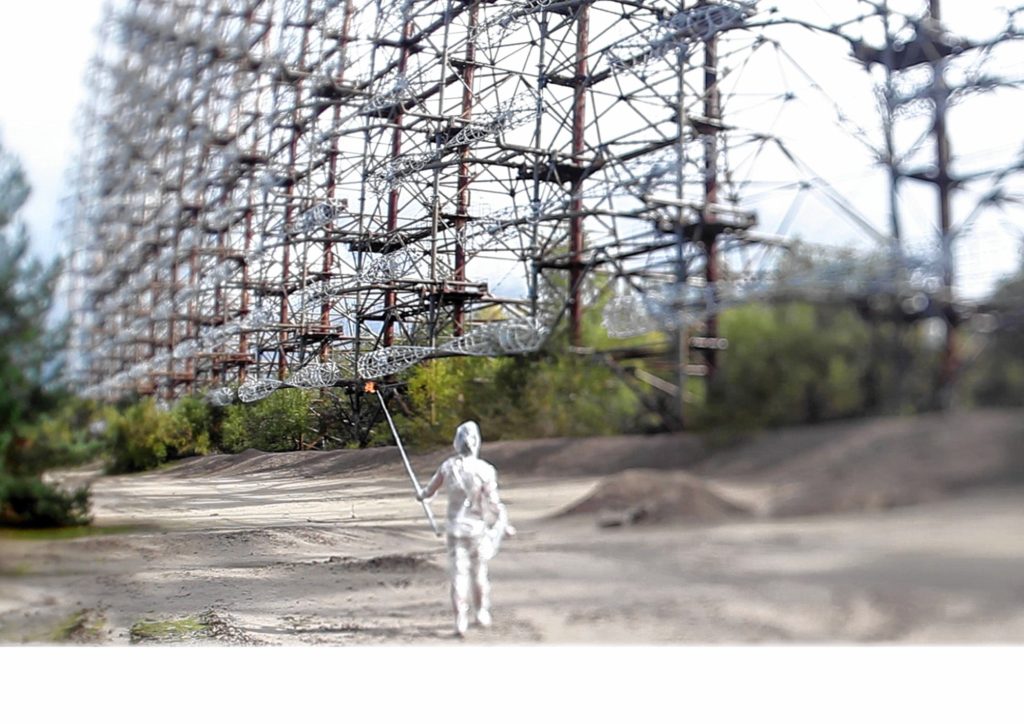Conspiracy Theories
“Challenger” will forever be one of those words whose meaning — or at least its history — is immediately known to anyone old enough to have lived through the 1986 space shuttle disaster. That tragic moment, witnessed live by so many American children (I was one such seventh grader, watching on a TV wheeled into our social studies classroom), is still seared in our national memory. Just seeing the shape of the explosion’s smoke plume is enough for most people my age to identify the day, and to tell you exactly where they were when it happened.
But there was another major disaster that year, by most accounts much greater. Just a few months after Challenger went down, the Chernobyl nuclear disaster would plunge the USSR, and much of the developed world, into a state of panic as the Soviets sought to contain the radioactive fallout from a devastating reactor explosion. The ultimate damage from that event is probably still unknown — three decades on is a mere blip for radiation — but this week a new film seeks to explore what led to the disaster in the first place.
The film is The Russian Woodpecker, which screens this Monday at 7 p.m. at Amherst Cinema, with director Chad Gracia appearing in person. Part of the Bellwether Film Series — which, as co-curated by Amherst’s general manager George Myers, Valley filmmaker Luke Meyer, and Creative Media Institute program director Andrew Hart, seeks to bring new voices in film to Valley audiences — the film is an award-winning look at the disaster, but one with an unusual point of view.
It belongs to artist Fedor Alexandrovich, who has a theory that the Chernobyl disaster was an inside job. It sounds outrageous, especially to an audience long tired of the “9/11 was an inside job” conspiracy theorists. But as the story unfolds — and especially as the secret police appear and a cinematographer is shot by a sniper — one begins to wonder if Alexandrovich might be on to something after all. At the heart of his conspiracy is the Duga radar array, a massive Cold War era structure that was built as a low frequency radio transmitter but which proved to be a giant, very expensive, failure (the film’s title refers to the constant clicking of the array broadcast over the radio waves). The disaster, says Alexandrovich, was meant to be a distraction from the Duga scandal, a way for those in power to dance while the poor kept busy with poverty.
Is it true? While the direct connection of the two seems less likely than Alexandrovich might have us believe, there is no denying that not everything was being done above-board in the USSR, and the events of the film leave one thinking that something, at least, is being hidden. For an inventive take on the idea of documentary, Gracia’s is well worth a look — even more so when you can follow up with the director himself that very night.
Also this week: If you’re beginning to tire of our political circus this year, you might take a break by shooting up to Shelburne Falls this Friday and Saturday, when Pothole Pictures puts on screenings of Meet John Doe, director Frank Capra’s (It’s a Wonderful Life) tale of political maneuvering in the media. In it, wily newspaper columnist Ann Mitchell pens a column that quotes a fictional man — John Doe — only to find that his story strikes a chord with the public. As the John Doe philosophy (“Be a better neighbor”) picks up steam, Mitchell and her boss hire a homeless man (Gary Cooper) to play the man that the public has fallen for. As with any political story, there are plenty of lies and deceit spread around in Meet John Doe, but Capra’s vision is, ultimately, a hopeful one. One wonders if we’ll all feel the same come November.
Jack Brown can be reached at cinemadope@gmail.com.



